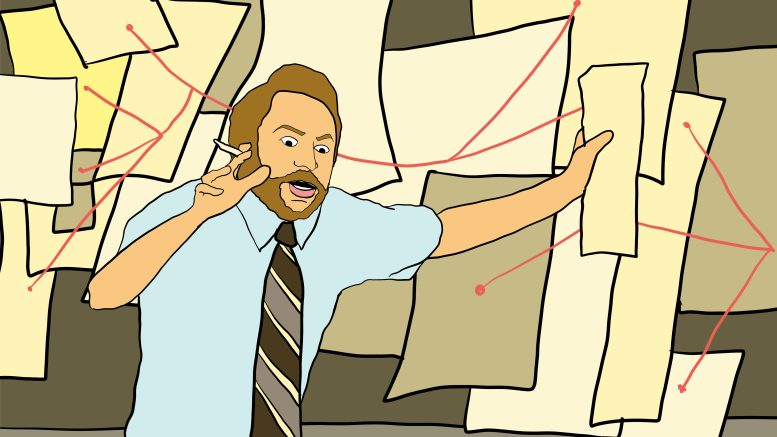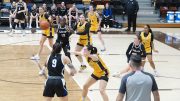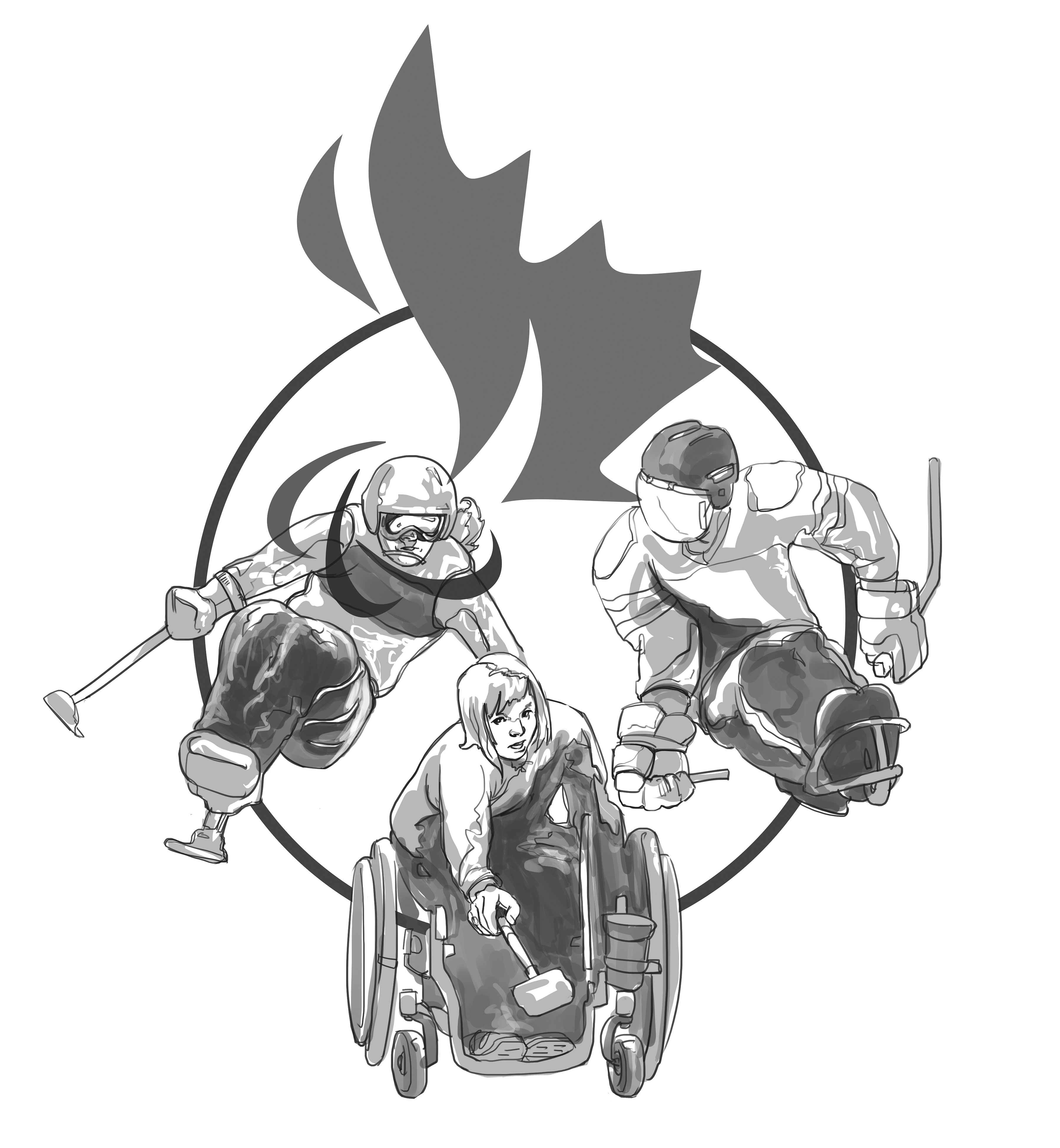It’s March. It’s that time of year when we foolishly hope the snow will be gone by April, and
when we all take a keen interest in National Collegiate Athletic Association (NCAA)
basketball.
We take an interest because we, like many across the world, harbour an aspiration to
predict the tournament — to pen an immaculate bracket.
And on this past Sunday, March 12, the NCAA unveiled the 68-team bracket for its mega-
popular annual basketball tournament, which has garnered the nickname “March Madness.”
It’s called March Madness, in part, because the tournament always delivers delightfully entertaining
chaos.
Another thing the tournament always delivers is upsets — and upsets mean busted
brackets.
Indeed, there has never been a perfect bracket. The closest anyone has come to
perfection was in 2019, when an Ohio, U.S. neuropsychologist rattled off 49 correct picks in
a row out of the 63 games to pick.
The probability of getting 49 in a row correct is basically inconceivable. It would be
represented by the fraction one over two to the power of 49. It equals such a high number
your calculator won’t even show it to you in full.
To help comprehend the incomprehensible probability of filling out a perfect bracket, the
Manitoban interviewed U of M statistics professor and associate head, Alexandre Leblanc.
The simplest way of defining probability, is to draw on the classic experiment of a coin flip.
The chance of getting either heads or tails is 50/50. It’s important to understand that, at its
core, probability is just a fraction, how often something occurs.
“Mathematically […] it means if you were to repeat the same experiment under the same
conditions, very, very, very many times — infinitely, often — in the long run, in proportion,
the fraction of the time where you would have seen heads over the total number of flips,
would be one half, 50 per cent,” Leblanc explained.
The difficulty with most kinds of probability, however, is that one cannot be entirely sure
about the fraction they’ve come up with when the experiment in question cannot be run an
inordinate number of times.
This is known as subjective probability.
In the NCAA tournament, there are 63 games played. And, if you’re just guessing, you’ll
have a 50/50 shot for each of the first-round games. But that’s only 32 of the 63.
The chances of you getting them right in the second and subsequent rounds drop even more
because the teams you picked to win in the first round may not have gotten to the second
round at all.
Therefore, guessing the first-round games are the simplest because the
matchups are fixed.
Nevertheless, the chances of you selecting the first round correctly at random is “one over
ten billion […] still impossible to do, still very hard,” Leblanc explained.
But the real difficulty comes with trying to predict the whole tournament correctly. It’s like
flipping a coin over and over and trying to get tails 63 times in a row.
As a fraction, Leblanc explained, the probability of selecting every game correctly is
represented by one over two to the power of 63, which is an astronomical number.
According to the NCAA, the likelihood of filling out the perfect bracket can be as high as one
in 9.2 quintillion.
“This is just unthinkable how big this is,” Leblanc noted.
To help conceptualize how large that number is, if everyone in the world — roughly eight
billion people — was constantly filling out one bracket per second, in the hopes of generating
every single possible outcome, and thereby attaining the perfect bracket, it would take the
entire world 36 and a half years to write them all.
“The whole world, working on writing these little papers for 36.5 years, would lend you one
paper per each possible bracket,” Leblanc added. “It’s just crazy! It can’t work.”
Even if you were 90 per cent sure who would win each game, the probability of you
selecting each game in the first round correctly is still only about 3 and a half per cent.
Moreover, concerning the unfathomable odds of a perfect bracket, Leblanc calculated that
“it’s easier to win the jack pot at Lotto 649 twice in a row […] it’s 47.2 thousand times easier.”
Will this dismal probability of success dissuade people from making brackets? Of course
not. And it shouldn’t, for, at its heart, it’s just good fun.
Yet, when asked why he thought people try to construct the perfect bracket, Leblanc said,
“well, obviously they don’t realize that it’s not possible.”
Nonetheless, improbable odds aside, there are still strategies you can adopt to increase
your chances of doing well.
A University of DePaul professor, a post-secondary school in
Chicago, Ill., thought the odds of someone who follows college basketball picking a perfect
bracket were only one in 128 billion.
So, there’s a bit more hope if you’re in the loop.
If you’re not, don’t worry. When filling out a bracket, it’s typically a good idea to always
pick the higher seeds — especially the number one seeds.
However, it’s also important to remember that the “rankings are made up math numbers,”
and that they don’t “actually have any physical meaning when the team hits the court,”
Leblanc said.
Nevertheless, the key to a good bracket is to spy out the possible upsets. The six versus
11 and 5 versus 12 games are usually rife with them.
Usually, there’s at least one upset in every region. Here’s a few I’ve got a good feeling
about, because, at the end of the day, picking is mostly about feeling.
In the South region, keep your eyes on the five versus 12 game between the University of
San Diego State University Aztecs and the College of Charleston Cougars. Charleston is just
one of four teams in the tournament with 30 plus wins.
In the East, Oral Roberts University Golden Eagles may take down perennial powerhouse
Duke University Blue Devils, but the University of Tennessee Volunteers’ starting point
guard is injured, so take the University of Louisiana Ragin’ Cajuns in a 13 over four upset.
In the Midwest, number one seed University of Houston Cougar’s best player, Marcus
Sasser, recently suffered an injury and it’s unknown when he’ll return. So, whichever team
you take in the eight versus nine game, advance them to the sweet 16, too.
Finally, in the West, side with the Virginia Commonwealth University Rams over the University of
Saint Mary’s Gaels. The Rams are rolling, having won nine games in a row entering the tournament.




